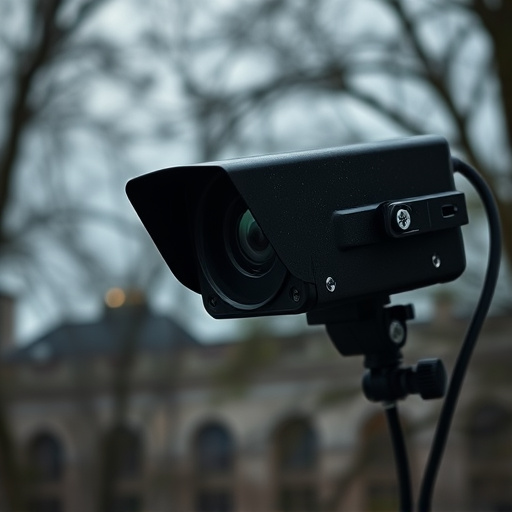Mini Surveillance Cameras for Apartments leverage electromagnetic signals to offer advanced security, capturing clear video and detecting motion in low-light conditions. Strategically placed, they provide 24/7 monitoring via smartphones and cloud storage, deterring intruders and offering peace of mind. Specialized techniques using directional antennas and signal filtering isolate these cameras, but their deployment raises legal and privacy concerns requiring consent and compliance with local regulations to avoid serious charges. Installation involves discreet placement, clear lines of sight, protection from elements, regular testing, and knowledge of regulations for a seamless process.
Uncover the unseen with our comprehensive guide on hidden lens electromagnetic signal scanning. We demystify electromagnetic signals, highlighting their role in modern surveillance, especially through mini surveillance cameras for apartments. Learn about advanced scanning techniques to detect these hidden lenses and navigate legal considerations regarding apartment security. Discover tips for successful installation, ensuring both effective protection and respect for privacy.
- Understanding Electromagnetic Signals: A Basic Guide
- The Role of Mini Surveillance Cameras in Apartment Security
- Scanning Techniques for Uncovering Hidden Lens Signals
- Legal Considerations and Privacy Concerns with Apartment Surveillance
- Implementing Effective Measures: Tips for Successful Installation
Understanding Electromagnetic Signals: A Basic Guide
Electromagnetic signals are an integral part of modern life, often carrying information crucial for various technologies and devices. Understanding these signals is essential, especially when considering their potential use in surveillance and security systems. Mini surveillance cameras for apartments, for instance, can benefit from this knowledge to enhance their capabilities.
These signals are generated by electromagnetic fields, which can be manipulated and detected using specialized equipment. By scanning and analyzing these fields, it’s possible to gather valuable data about the environment and even uncover hidden details. This technology is particularly useful in situations where traditional cameras might struggle, such as in low-light conditions or when capturing unperceived activities.
The Role of Mini Surveillance Cameras in Apartment Security
In today’s digital era, mini surveillance cameras for apartments have emerged as a game-changer in home security. These tiny yet powerful devices offer residents an extra layer of protection and peace of mind. By strategically placing them in key areas like entry points, common areas, and sleeping quarters, apartment dwellers can monitor their surroundings 24/7. The advanced technology behind these mini cameras enables clear video feed, motion detection, and even remote access through smartphones, allowing tenants to stay connected to their homes from anywhere.
Unlike traditional security systems, the compact size of mini surveillance cameras makes them nearly invisible, ensuring a discreet presence. This subtle approach can deter potential intruders while providing valuable evidence in case of any suspicious activities. Moreover, with cloud storage options available, residents can easily review past footage and stay alert about any unusual occurrences within their apartment buildings.
Scanning Techniques for Uncovering Hidden Lens Signals
Uncovering hidden lens signals requires advanced scanning techniques, especially in sensitive areas like apartments where mini surveillance cameras are often used. One effective method involves employing directional antennas that can zero in on specific frequencies associated with these miniature devices. By adjusting the antenna’s position and angle, operators can optimize signal reception, ensuring no detail goes unnoticed.
Additionally, signal filtering technology plays a pivotal role in this process. Advanced algorithms enable the isolation of electromagnetic signals from mini surveillance cameras, making it possible to detect subtle variations that might indicate their presence. This technique is particularly useful when dealing with dense environments where multiple devices emit similar frequencies, allowing for precise identification and localization.
Legal Considerations and Privacy Concerns with Apartment Surveillance
The use of mini surveillance cameras in apartments brings up a range of legal considerations and privacy concerns. In many jurisdictions, the installation of such devices requires consent from all residents, particularly when it comes to capturing images within private living spaces. Unlawful placement or recording of individuals without their knowledge can lead to severe legal repercussions, including charges for invasion of privacy or unauthorized surveillance.
Privacy advocates argue that the presence of hidden electromagnetic signal scanning tools, or mini surveillance cameras, in apartments could infringe upon tenants’ rights to a reasonable expectation of privacy. It’s crucial for both landlords and residents to understand the local laws and regulations regarding surveillance technology to ensure compliance and maintain a safe, respectful living environment.
Implementing Effective Measures: Tips for Successful Installation
When installing a hidden lens electromagnetic signal scanning system, especially in apartments, it’s crucial to take a systematic approach. Start by identifying the optimal placement for your Mini Surveillance Cameras for Apartments—discreet yet strategic locations offer the best coverage without raising suspicions. Ensure the cameras have clear lines of sight to capture the desired data.
Next, consider environmental factors: protect the devices from extreme temperatures and ensure adequate power supply. Regularly test the system to maintain optimal performance and verify signal strength. Additionally, familiarize yourself with local regulations regarding surveillance to avoid any legal pitfalls, ensuring a smooth and effective installation process.
The integration of hidden lens electromagnetic signal scanning guides, coupled with the strategic placement of mini surveillance cameras for apartments, represents a significant advancement in home security. By understanding electromagnetic signals and leveraging advanced scanning techniques, homeowners can proactively protect their spaces while navigating legal considerations related to privacy. Implementing effective measures, as outlined in this guide, ensures a successful and responsible approach to enhancing apartment security.
